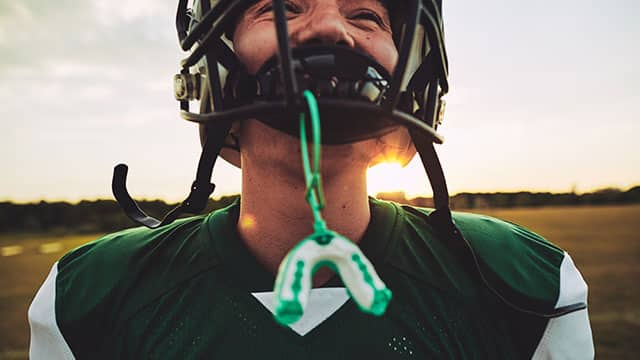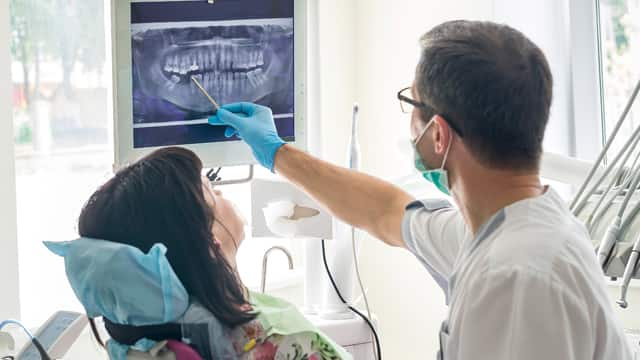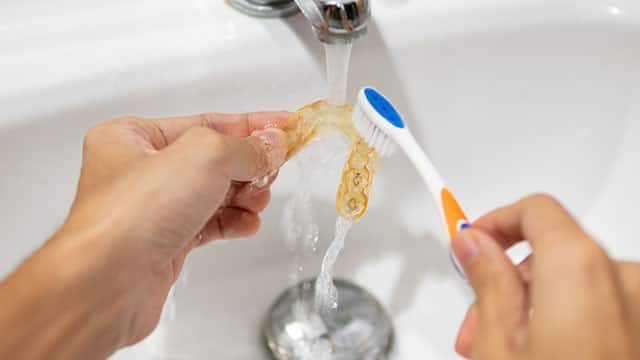As it is for physical and mental health, maintaining oral health as an athlete is essential. While modern dentistry can now repair most tooth injuries sustained while playing a sport, the toll certain oral injuries take on athletes can be traumatic.
According to the American Dental Assistants' Association, approximately 15 million Americans experience some type of sports-related dental injury each year. About 10 percent of players will end up with a dental or facial injury in any given athletic season.
Top 3 Dental Injuries
1. Cracked Teeth
When an athlete takes a blow to the face, it could result in a cracked or fractured tooth.
If a tooth shows longitudinal cracks or cracks that appear across the tooth, it might only have what dental professionals call "craze lines." These are superficial cracks in the enamel and aren't high risk for dental health.
However, if a tooth's crack or split begins at the tooth's crown and extends downward, it's a bona fide cracked tooth.
With a cracked tooth, you might experience such symptoms as:
- Sharp pain when you bite down.
- Tooth pain that comes and goes but isn't always present.
- Pain while eating and drinking, especially when you consume hot or cold foods.
- The loss of a section of the tooth's outer enamel shell can expose the subsequent layers of your tooth.
The layers below the enamel are a hard layer called the dentin followed by soft tissue known as the pulp (the location of your tooth's nerves and blood vessels), according to the American Association of Endodontics (AAE).
Because a cracked tooth isn't always visible to the naked eye, you might have one and not experience any pain. Only during your next dental checkup will the damage be discovered. (Another reason regular dentist visits are essential.)
If the crack is a vertical fracture that doesn't extend beyond the visible part of your tooth, it usually won't cause you to lose a section of your tooth and expose the tooth pulp.
But, if the crack extends beyond the gumline, it could affect the cusp, the tooth's pointed tips. This might be a cuspal fracture, requiring a tooth extraction or a root canal to avoid bacterial infection.
2. Fractured Roots
If an athlete receives a blow at a certain angle, it might cause a fractured root. Instead of a crack starting at the top of the chewing surface and moving to the root, a fractured root begins at the root level and works its way to the tooth's visible surface.
Because these fractures are often invisible, you might only discover the problem when an infection develops. The severity of this type of tooth injury depends on the location of the fracture along the root.
The sooner a patient with a root fracture receives root canal therapy (also known as endodontic treatment) to prevent infection in the pulp, the less likely they are to experience necrosis that leads to tooth loss.
Sports injuries are usually associated with teeth getting knocked out, but some injuries can drive teeth back into the jawbone.
This type of trauma is called an intrusion. It's more common in "baby teeth" because a child's alveolar bones – which hold the tooth sockets – are not as hard as an adult's. However, it can happen to athletes of all ages, and tooth trauma healing time can put you out of action for a long time.
Some of the complications arising from tooth intrusion include:
- Destruction of the tooth pulp, either by it "dying" (necrosis) or being damaged beyond recovery during the injury incident
- Root resorption, a shortening of the roots
- Ankylosis, the fusion of the injured tooth's root to the alveolar bone
How Can I Protect My Teeth While Playing Sports?
An ounce or more of prevention is worth it when it involves protecting your jaw and teeth. The cost of replacing a lost tooth is about 20 times more than the price of a custom-fitted mouthguard.
Fortunately, learning how to protect your teeth when playing a sport or participating in close-contact recreational activities isn't as difficult as the frequency of these incidents suggests. In fact, the right gear has kept more than 200,000 injuries from occurring annually.
Team Sport Protection
There are two essential items if you play well with others.
1. Mouthguards
The National Youth Sports Safety Foundation (NYSSF) estimates that players who don't wear mouthguards are 60 times more likely to damage their teeth during competition.
So, a mouthguard is a must when you play any sport that involves bats, balls, sticks, or person-to-person contact.
A typical mouthguard covers the top teeth and is good for one athletic season. They're designed to guard against cut lips, broken teeth, and other types of damage to the mouth.
There are three types of mouthguards:
- Stock mouthguards. This variety is ready to wear right out of the package. Though it's inexpensive, it might not fit very well nor be comfortable.
- Boil-and-bite mouthguards. This type of guard is precisely as it sounds. Boil a preformed piece of plastic and then bite into it for a customized fit. You can find boil-and-bite mouthguards at most sporting goods stores.
- Custom-made mouthguards. A sports dentist makes this type right in the office or in a dental lab. It's specifically designed for your mouth by using an impression of your teeth. From there, the mouthguard is crafted to fit over the impression.
Considering the customization and effort involved to fabricate these mouthguards, they are the most expensive. However, custom mouthguards provide the best fit and protection.
2. Helmets
A sturdy helmet with a faceguard gives you an extra layer of protection in sports such as football or hockey. Other sports, such as baseball, require special headgear.
No matter the sport, if there's a chance of hard physical contact with your face or jaw, don the helmet.
Solo Sports Protection
Even though there's minimal to no risk of you being hit in the tooth with a ball, bat, or other person's arm when on a bike or pair of skis, you still face the potential of falling and coming into contact with the hard ground. You also can run into something, such as a tree or parked car, leading to injury from low visibility on a narrow trail or sidewalk.
Always wear a helmet to protect your head when cycling, skating, or skiing. Remember to choose the right kind for the sport for optimal protection. A mouthguard is also a good idea, as a helmet alone won't shield your teeth.
Swimming Protection
You face little risk of breaking a tooth while swimming – barring a bump to your mouth against a hard wall – but you still want to protect your mouth over long periods of pool time.
One of the best ways to do this if you're an avid swimmer is to ensure the pool you swim in is well maintained. If the pH of your swimming pool is too low (meaning it's too acidic), according to Delta Dental, you're at a higher risk for swimmer's mouth. This condition can cause your teeth to stain and dental pain, as well as increase tartar (calculus) formation.
Along with maintaining your pool and keeping its chlorine levels at the recommended level, you can further protect your teeth by keeping your mouth closed when you swim. That way, chlorinated water doesn't come into contact with your teeth as often.
What's Sports Dentistry?
If an injury seriously affects an athlete's oral health, you might consult a sports dentist.
The FDI World Dental Federation defines this subdivision of dentistry as "the branch of sports medicine dealing with prevention and treatment of dental injuries and oral diseases associated with sports and exercise."
For professional athletes, sports dentists might be their primary dentist.
However, for non-professional athletes, a consultation with your family dentist to ensure you have the proper protection will put you on the winning track to avoid potentially severe dental sports injuries.
Did You Know?
April is National Facial Protection Month, commemorated to remind parents, coaches, and athletes, to gear up for recreational and organized sports.
National Facial Protection Month is sponsored annually by a group of heavy hitters in the oral care world: American Association of Orthodontists, the American Association of Oral and Maxillofacial Surgeons, the American Academy of Pediatric Dentistry, the Academy for Sports Dentistry, and the American Dental Association.
Maintaining oral health as an athlete is essential. While modern dentistry can now repair most tooth injuries sustained while playing a sport, these types of injuries can take their toll just like any muscle or bone injuries that can occur. Consult with your dentist when your child starts playing sports so that they can offer you guidance on the choice of mouthguards and offer any other protective measures they think can help protect against injury.
Oral Care Center articles are reviewed by an oral health medical professional. This information is for educational purposes only. This content is not intended to be a substitute for professional medical advice, diagnosis or treatment. Always seek the advice of your dentist, physician or other qualified healthcare provider.
ORAL HEALTH QUIZ
What's behind your smile?
Take our Oral Health assessment to get the most from your oral care routine
ORAL HEALTH QUIZ
What's behind your smile?
Take our Oral Health assessment to get the most from your oral care routine















